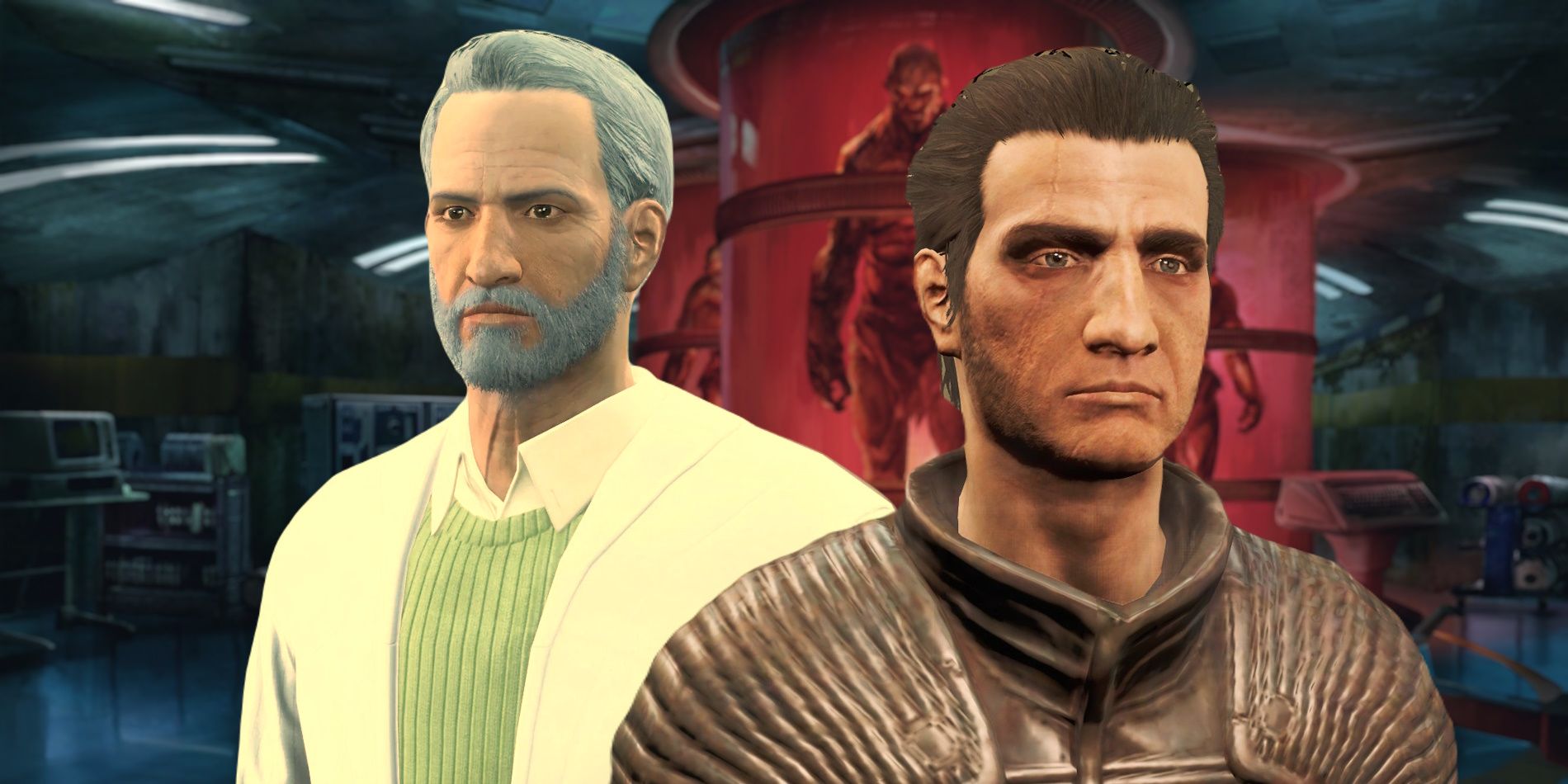[ad_1]
Of the four main factions in Fallout 4 that the sole survivor can side with, the Institute is easily the most mysterious and malicious. The underground technocratic organization seeks to maintain control and surveillance of the Commonwealth wasteland, and does so mainly through the deployment of humanoid robots known as “synths.” Even for players that wish to join the Institute, they serve as the primary antagonists for the game’s first act, being the group responsible for the kidnapping of the sole survivor’s son.
Warning: This article contains spoilers for Fallout 4.
The Institute is feared and villainized by the majority of folks in the Commonwealth, but few know anything about the group’s members or its history. The game itself is shy on details about the Institute’s past, especially during the first act, reflective of the organization’s clandestine nature. But it is possible to piece together the information players can acquire to create a rough timeline of the Institute’s activities in the Commonwealth, from before the Great War and up to the point that the Sole Survivor enters their facility.
The Institute’s Pre-War Roots
The Rebirth Of The C.I.T.
The Institute’s existence technically predates the nuclear war that destroyed the world, having been built under the Commonwealth Institute of Technology before 2077. It was originally intended as an underground research facility housing an experimental nuclear reactor, hence the incredibly advanced architecture the Institute lives in compared to everything above ground. But the group wasn’t officially created until the year 2110, more than thirty years after the bombs dropped, when the children of the original C.I.T. survivors banded together under that name.

Related
Fallout 4: Which Faction Should You Choose In The Main Story?
To join one of Fallout 4’s carefully crafted factions comes with pros and cons, which makes deciding one of the game’s most important questions.
The goal of the group was to continue the scientific discovery and advancement the college above them had focused on before, and mainly did so by working on creating the first generation of synths, synthetic humanoids capable of independent action and intelligent speech. While the synths would eventually become near-perfect facsimilies of living people, the early models were little more than robots, and the Institute actually used them to help the people of the wasteland to try and rebuild up top. Unfortunately, that cooperation did not last long.
Early Conflicts With The Wastelanders
Surveillance And Subjugation
It wasn’t long before a sense of distrust and disdain formed between the wastelanders and the Institute scientists, derived from their different living conditions and priorities. The Institute slowly but surely isolated itself, no longer embarking to the surface themselves, but exploring it purely through sending up synths. This kept them safe from the radiation and mutants above, but also polarized them from the people of the Wastes, creating even more tension.
The Institute was already rather self-contained, but at this point became almost completely cut off from taking in new residents, meaning most of those living inside it at the time of
Fallout 4
are the descendants of the original founders.
As above-ground settlements like Diamond City began to grow, the Institute focused on their own advancement, from creating radiation-free crops to developing a second generation of synths with more human-like features. It was during the following decades that the Institute began treating the people of the Commonwealth less like neighbors and more like subjects for their experiments.

Related
Fallout 4’s Link Between Synths & Super Mutants Explained
While many Fallout 4 players think they know how the Gen 3 Synths were made, the truth is far more horrifying with surprising links to old enemies.
To learn about and control the FEV virus, they began kidnapping wastelanders and exposing them to it, making them into Super Mutants and performing surgery on them against their will. While this research would ultimately cease, it fully villainized the Institute to the people aboveground, and began a fear of being kidnapped by the scientists for use in horrible experiments.
Kellogg’s Induction And A New Era For The Institute
A Series Of Atrocities That Would Define The Faction For Decades
Right around the turn of the century in 2200, the Institute recruited a mercenary that would become central to their later infamy: Kellogg, a cruel and callous man who worked alongside synths to perform missions in the Commonwealth. It was during the next couple of decades that the synths became very close to human, and the group’s most notorious scandals occurred. In 2229, for instance, The Broken Mask Incident happened in Diamond City, when a synth went haywire and killed several people before being brought down.
The Broken Mask is referenced in the newspaper Publick Occurrences, making it more widely known among players, but other settlements seem to have had their own violent run-ins with synths, such as University Point.
Several years later, the synths would be responsible for more violence: the massacre of the Commonwealth Provisional Government, when the people of the Wasteland attempted to band together and govern the Commonwealth, only to be cut down by a synth spy. But of course, the mission that predated both these events was the kidnapping of Shaun, the sole survivor’s son, whose DNA it was that made human-like synths possible. It was not as public as the former scandals, but that mission would ultimately be what set the events of the game in motion.
In response to the presence of human-like synths, which occasionally went rogue out of a desire to lead their own lives, a group called the Railroad was formed to try and rescue the synthetic people. The Railroad and Institute would become enemies not long after, with both groups trying their best to spy on and hide from the other.
The Sole Survivor’s Son Takes Power
Shaun Becomes Father
A number of decades after being brought into the Institute, Shaun would join its ranks as an intelligent and driven scientist, eventually rising to the position of director. His direct tie to the third-gen synths and his complete isolation from the outside world shaped Shaun into the perfect amalgamation of the Institute itself: obsessed with progress, detached from the outside world, and willing to be ruthless to achieve the ends he sees as necessary.

Related
After Playing Fallout 4 Since Launch, I’ve Decided The Sole Survivor Is The Worst Part Of The Game
Fallout 4’s Sole Survivor should have been an interesting protagonist but falls short, surprisingly due to their connection to the main plot.
Under Shaun’s leadership, the Institute would begin working toward an ambitious goal: power up their reactor to provide them with near unlimited energy, and take over the Commonwealth to keep order and continue their scientific pursuits. By this point, the Institute has become a “boogeyman” topside, treated almost like a ghost story told in hushed tones so to avoid the ears of synth spies. Paranoia around the synths has reached a boiling point, leading people to distrust and kill one another and making the Railroad’s rescue missions all the more difficult.
Then, in 2287, a new factor came into play: the sole survivor, the player’s point of view character in Fallout 4. After years of wondering about his familial roots, Shaun himself decides to thaw the survivor from their cryogenic stasis in Vault 111, curious whether his parent would look for him. Shaun set up Kellogg, the man who had kidnapped him, to be found and killed by the survivor, and left a trail of breadcrumbs for them to enter the Institute. From there, the direction of the faction and the Commonwealth itself is up to the choices of the player.
Source: Bethesda/YouTube

- Released
- November 10, 2015
[ad_2]
Source link





